巴西蜂胶化学成分的研究进展
申小阁,张翠平,胡福良
浙江大学动物科学学院,杭州 310058
蜂胶(Propolis)是蜜蜂工蜂采集植物树脂等分泌物与其上颚腺、蜡腺等分泌物混合而成的一种天然粘稠物质。蜂胶的应用历史十分悠久,早在公元前300 年,古埃及人就将其作为防腐物质及防治疾病的药物来使用。现代研究表明,蜂胶含有丰富的黄酮类、酚酸类及萜烯类化合物[1-3],具有广泛的生物学活性和药理学活性,如抗氧化、抗菌、抗病毒、抗炎、抗肿瘤、保肝、免疫调节等;目前已广泛用于医药、保健品、化妆品等领域[4]。
蜂胶在全世界范围内均有分布,其中,巴西因其得天独厚的地理位置和丰富的生物资源而成为蜂胶生产大国。巴西蜂胶种类繁多,化学组成复杂,具有丰富而突出的生物学活性。自20 世纪90 年代以来,巴西蜂胶的化学组成及其生物学活性引起了国内外蜂胶研究者的广泛关注。目前,已从中分离鉴定出了300 多种化合物[1-5]。本文对巴西蜂胶中已发现的化学成分进行分类总结,以期为巴西蜂胶的药理活性、质量控制以及开发利用提供理论依据。
1 巴西蜂胶的植物来源及成分特征
巴西地处热带气候的南美洲,植被种类繁多,蜂胶资源丰富。Park 等(2000)曾根据巴西蜂胶地理来源的不同将其分为12 种不同的类型:5 种来自巴西南部,6 种来自巴西东北部,1 种来自巴西东南部及中西部地区[6]。这些不同类型的蜂胶之间化学成分差异较大,而胶源植物是造成这一差异性的直接因素。目前,通过蜜蜂采胶行为的观察、蜂胶中花粉谱的显微检测以及两者化学成分的指纹图谱对比分析发现,巴西蜂胶的植物来源主要有Baccharis dracunculifolia[6-9]、Araucaria spp.[10-12]、Eucalyptus spp.[10,13-16]、Dalbergia ecastophyllum[17-18]、Clusia spp[12]和Hyptis divaricata[6]等15 种,其相应的化学成分也较为复杂(表1)。
酒神菊属型绿蜂胶是目前国际市场上最流行、研究最深入的巴西蜂胶。Bankova 等研究发现绿蜂胶的植物来源是Baccharis dracunculifolia[5-9]。Park等(2004)进一步观察到蜜蜂主要采集该植物的幼芽和未展开的嫩叶,很少采集展开的叶子[19]。典型的酒神菊属绿蜂胶质地坚硬易碎,颜色从黄绿色到深绿色不等,具有宜人的芳香气味,同时还兼有其独特的辛辣味。酒神菊属型绿蜂胶主要分布于巴西东南部和中西部地区,其主要成分为异戊烯化苯丙素类及其衍生物、咖啡酰奎宁酸类及一些萜烯类化合物,而黄酮类化合物含量相对较低。阿替匹林C(3,5-二异戊烯基-4-羟基肉桂酸)是酒神菊属型绿蜂胶的特征性成分,其含量主要受地理来源、植物来源及采胶季节的影响[20]。韩利文等还建立了反相高效液相色谱法测定蜂胶中阿替匹林C 含量的方法[21],为酒神菊属型绿蜂胶的质量评价提供了可靠的理论依据。

表1 巴西蜂胶的植物来源及相关化学成分Table 1 Plant origin and chemical composition of Brazilian propolis
除了Baccharis dracunculifolia 外,Araucaria spp.及Eucalyptus spp.也是巴西东南部及南部地区蜂胶的植物来源。Barth 及Silva 等对圣保罗、里约热内卢地区多个蜂胶样中的花粉进行显微检测,结果发现大量的桉属植物花粉粒[13,16],进一步对桉属植物叶芽提取物的化学成分进行测定发现肉桂酸、p-香豆酸及没食子酸是其主要的化学成分[10]。Bankova等采用GC-MS 技术对圣保罗地区的蜂胶样及南洋杉属植物叶芽分泌物的化学成分进行测定,结果显示二者含有相同的二萜类化合物,其中半日花烷型二萜酸类化合物(南洋杉酸、E/Z Communic acid)是其主要的组成成分[10],这也证实了Araucaria spp.是巴西蜂胶中二萜类化合物主要的植物来源。
杨属植物(Populus spp.)主要分布于温带地区,杨树型蜂胶是温带地区典型的蜂胶类型。然而,Park 等在巴西南部地区也发现了少量的植物来源为Poplar alba 的蜂胶类型,其化学成分主要为短叶松素、乔松素、短叶松素-3-乙酸酯、柯因和高良姜素等几种B 环无取代基的黄酮类化合物以及杨树型蜂胶中特有的致敏性物质—1,1-二甲基烯丙基咖啡酸[6]。
Ito 及Junko 等在寻找有效的抗艾滋病药物过程中发现巴西南部的一种蜂胶具有显著的抗艾滋病活性,经研究证实该蜂胶的植物来源为Myrceugenia euosma(Myrtaceae),主要的化学成分为三萜类化合物及芳香族化合物[22]。
近年来,红色的蜂胶也越来越多地引起了人们的关注。最早报道的红色蜂胶是古巴蜂胶,其植物来源是Clusia nemorosa(Clusiaceae)[23];而委内瑞拉红蜂胶的植物来源是Clusia scrobiculata[24]。目前发现巴西有3 种不同植物来源的红色蜂胶。最初Park 等在东北部巴伊亚州发现了一种红棕色的蜂胶样,经蜜蜂采胶行为的观察和化学成分的对比分析,证实该蜂胶来源于Hyptis divaricata,含有少量的萜烯类、长链脂肪酸及其酯类化合物等一些弱极性物质[13]。而Trusheva 等(2006)报道的巴西红蜂胶成分的色谱图与委内瑞拉红蜂胶类似,异戊烯基苯甲酮是其主要成分[25],经花粉谱显微检测结果表明该蜂胶来源于Clusia spp.[12]。
另外一种红蜂胶是最近研究的热点,即典型的“巴西红蜂胶”;Park 等研究发现该蜂胶的植物来源是Dalbergia ecastophyllum,并观察到蜜蜂整个的采胶行为,进一步对其化学成分进行测定发现黄酮类化合物是其特征成分,包括紫檀碱、黄烷醇、新黄酮、异黄烷醇、异黄烷酮、查耳酮、异黄烷、异黄酮、黄烷酮和黄酮醇等[24]。
此外,巴西多个地区的蜂胶样中花粉谱的检测结果显示,Vernonia、Hyptis、Myrcia、Schinus、Mimosa pudica、Eupatorium、Acacia、Citrus spp.和Borreria 也是巴西蜂胶的胶源植物。
2 巴西蜂胶的化学组成
现已从巴西不同类型蜂胶中分离鉴定出362 种化合物。其中黄酮类化合物130 种、萜烯类化合物99 种、酚酸类化合物87 种、挥发油类25 种、木质素类6 种及其他类化合物15 种。
2.1 黄酮类化合物
黄酮类化合物是蜂胶中最为活跃的一类生物活性物质,根据母核结构的不同可分为黄酮、黄酮醇、二氢黄酮、二氢黄酮醇、异黄酮、二氢异黄酮、查尔酮、二氢查尔酮及新黄酮类化合物等。
巴西蜂胶中已分离鉴定出的黄酮类化合物大都以游离黄酮苷元形式存在,表现出很强的抗氧化、抑菌、抗炎、护肝等生物学活性[32,42];而黄酮苷类物质的报道较少。此前,Andreas 等[17]曾从巴西5 个不同地区的红蜂胶中分离鉴定出了芦丁;随后,Righi等[42]采用HPLC-DAD-ESI-MS/MS 技术从巴西阿拉戈斯州的红蜂胶中检测到了一种新的黄酮己糖碳苷类化合物。最近,Righi 等又从巴西多个地区的蜂胶样中发现了大量的黄酮氧苷及碳苷类化合物[58];通过进一步二级质谱图解谱发现这些黄酮苷类化合物多数由木樨草素、芹菜素、槲皮素、柚皮素与葡萄糖、阿拉伯糖、鼠李糖等单糖类通过“C-C”或“C-O”连接而成。其中,芹菜素-8-C-葡萄糖苷-6-C-阿拉伯糖苷首次在巴西绿蜂胶中发现。此外,该团队从中还分离到了9 种异戊烯基黄酮类化合物,这也是首次从巴西蜂胶中检测到该类型物质的存在。巴西蜂胶中已分离鉴定的黄酮类化合物见表2。

表2 巴西蜂胶中的黄酮类化合物Table 2 Flavonoids in Brazilian propolis
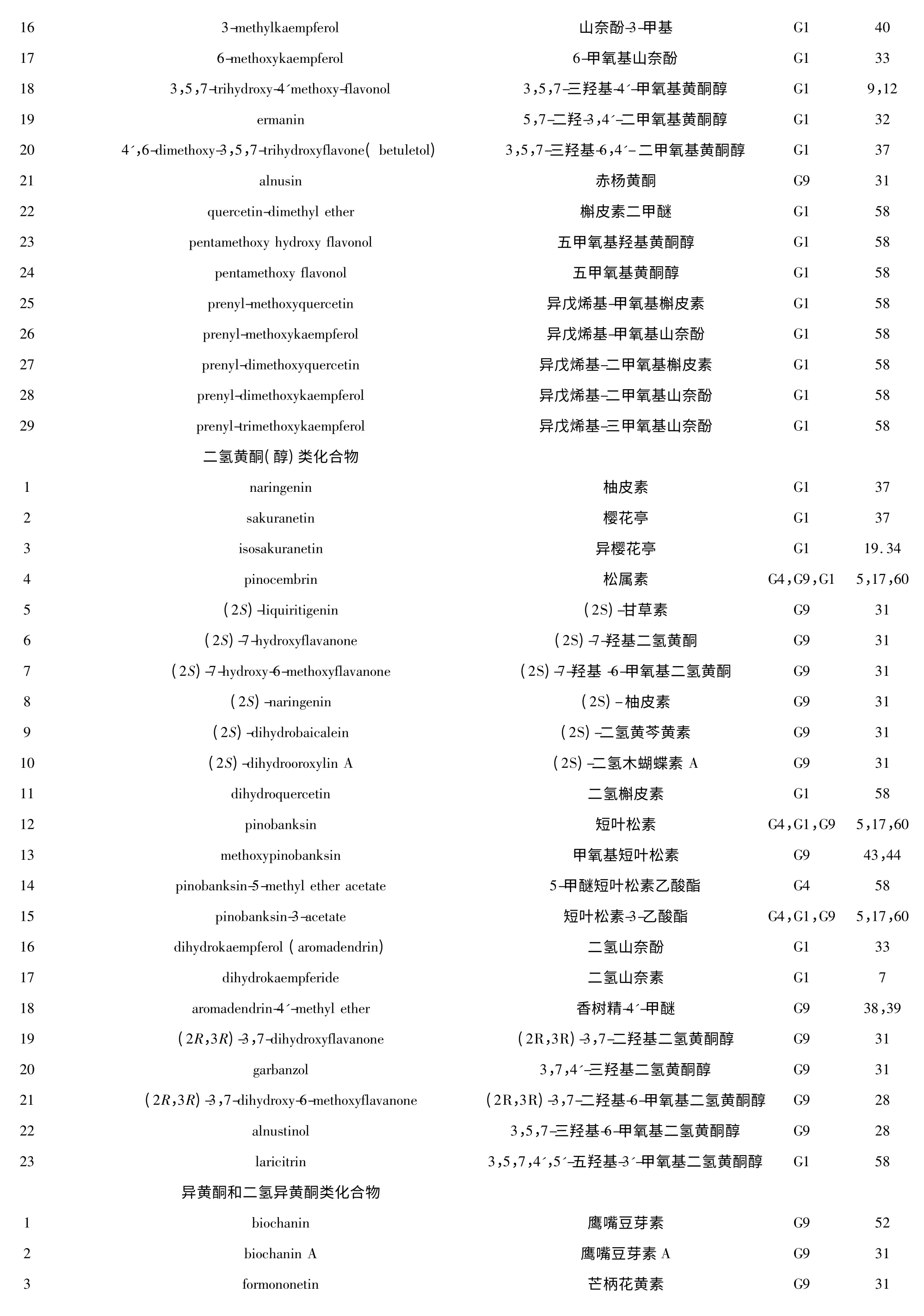


2.2 酚酸类化合物
研究发现,巴西蜂胶中酚酸类化合物含量丰富,种类繁多,在其抗氧化、抗菌、抗肿瘤、细胞毒性等生物学活性方面发挥着极其重要的作用[20,25]。
酚酸类化合物按其母核结构的不同可分为苯酚类、苯甲酸类、苯丙酸类、咖啡酰奎宁酸类以及其他较为复杂的酚酸类物质。其中,苯丙酸类化合物是存在于巴西蜂胶中最为普遍的一种酚酸类化合物,迄今已从中鉴定到了40 种该类型的化合物;而以羟基肉桂酸类衍生物尤其是异戊烯化p-香豆酸类化合物(阿替匹林C、3-异戊烯基肉桂酸烯丙酯)为代表的苯丙酸类物质在巴西绿蜂胶中最为常见,也是其典型的代表性成分,引起了人们的普遍关注。
其次,以绿原酸为代表的咖啡酰奎宁酸类化合物在巴西蜂胶中的含量也较为丰富,这包括单咖啡酰奎宁酸、双咖啡酰奎宁酸及三咖啡酰奎宁酸等化合物,研究表明该类物质具有强效的抗氧化及细胞毒性作用[25]。Righi 等通过HPLC 分离技术结合二级质谱又从巴西蜂胶中发现了几种新的阿魏酰-咖啡酰奎宁酸、阿魏酰奎宁酸类化合物以及一种新的甘油酯类化合物—二氢咖啡酸-二氢肉桂酸甘油酯[58]。
巴西蜂胶中已分离鉴定的酚酸类化合物见表3。
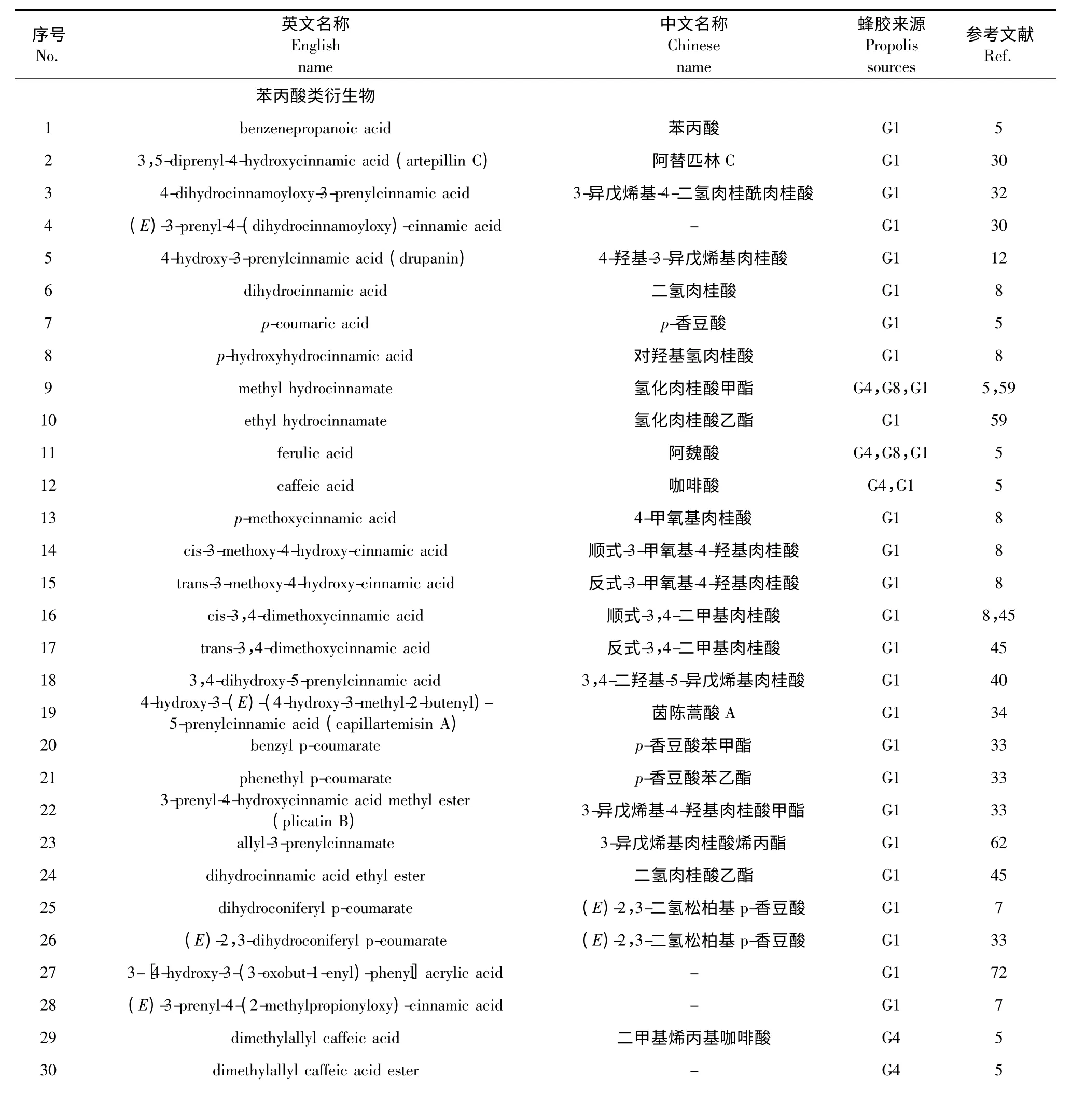
表3 巴西蜂胶中的酚酸类化合物Table 3 Phenolic acid in Brazilian propolis
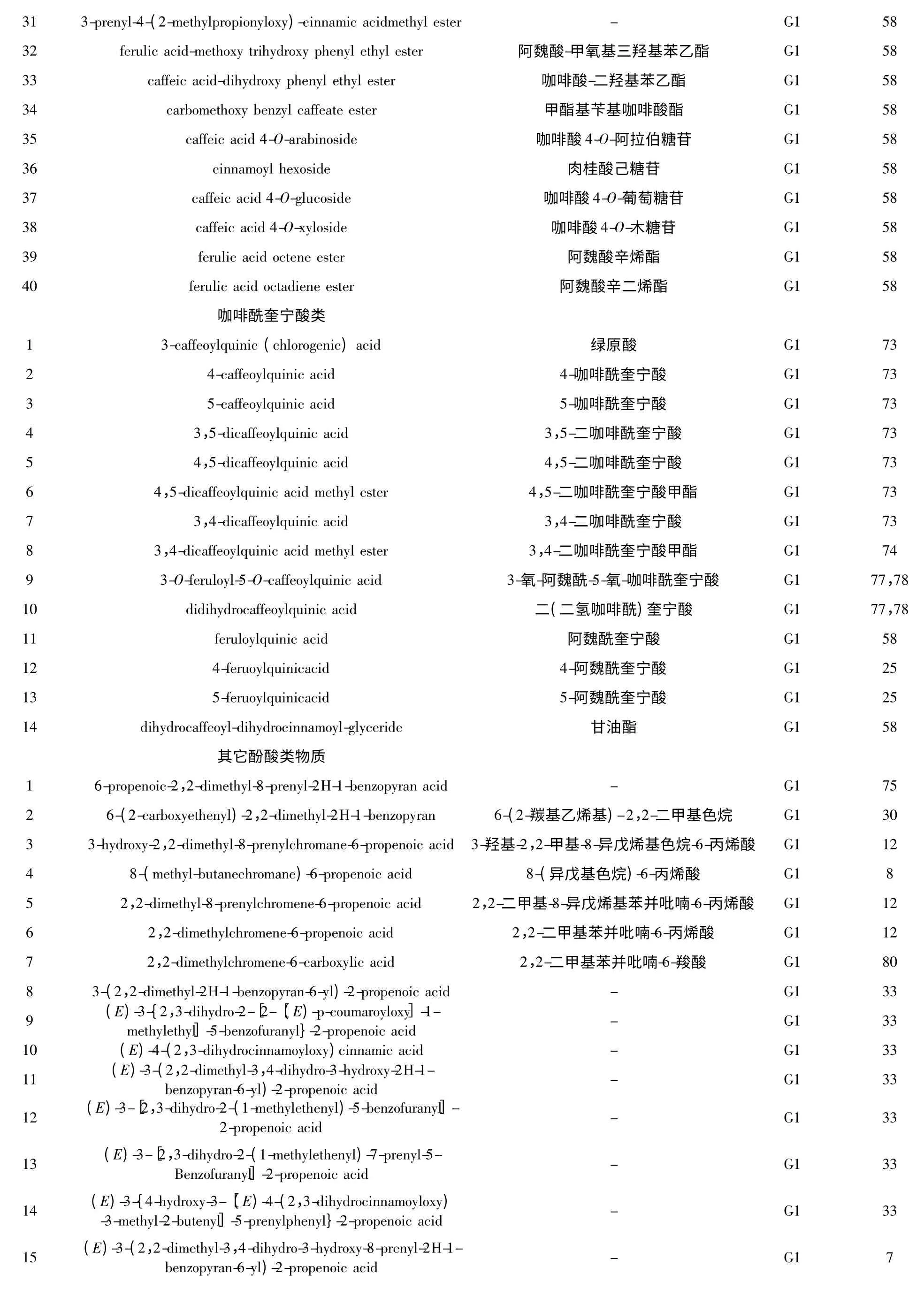
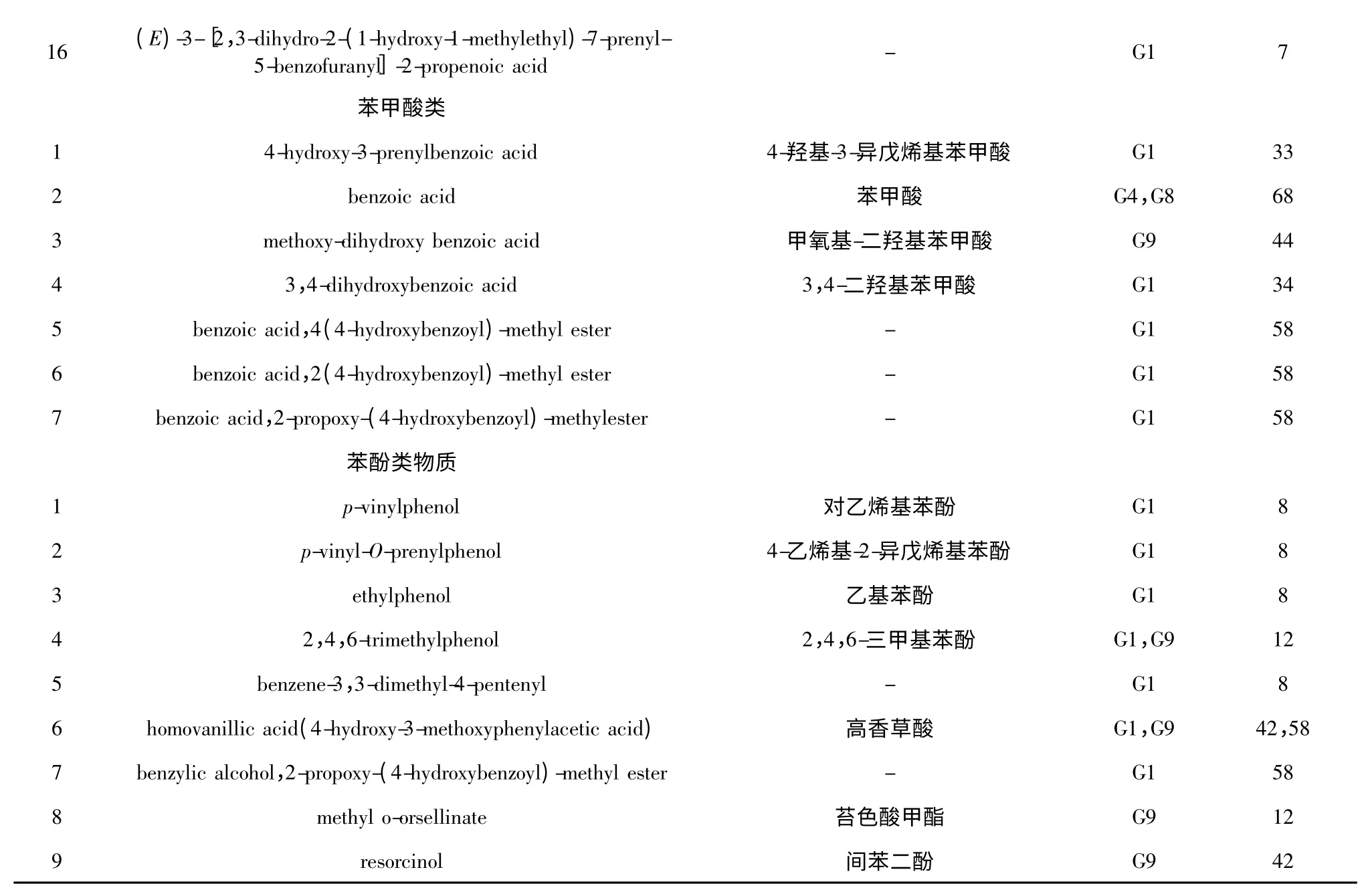
2.3 萜烯类化合物
目前从巴西蜂胶中共分离到了97 种萜烯类化合物,包括10 种单萜类、34 种倍半萜类、24 种二萜类及29 种三萜类物质(表4)。其中,倍半萜类化合物在巴西绿蜂胶中含量及种类最为丰富,也是其挥发油的主要组成成分,具有较强的抗菌活性。倍半萜类化合物基本的碳骨架主要为无环金合欢烷、单环没药烷、蛇麻烷,双环桉叶烷、石竹烷及三环柏木烷、香兰烷及其含氧衍生物;最近又从巴西红蜂胶中分离鉴定出了愈创木醇(酚)和isomaturnin 等物质。单萜类化合物是巴西蜂胶具有芳香气味及抗菌活性的另一主要活性成分,其含量相对较低,主要是无环月桂烯烷、单环薄荷烷类,以及少量的蒎烷及葑烷类化合物。蜂胶中的二萜类化合物类型较多,包括单环二萜、双环二萜、三环二萜及四环二萜,而巴西蜂胶中最常见的二萜类化合物主要为双环半日花烷型、克罗烷型及三环枞酸型,研究发现这些二萜类物质具有强效的护肝、抗癌等生物学活性[32,54]。三萜类化合物在巴西蜂胶萜类物质中含量及种类也较为丰富,主要以四环环菠萝蜜烷型、五环羽扇豆醇型及乌苏烷型为主,尤其是羽扇豆醇和香树精类衍生物。Junko 等还曾从巴西G5 蜂胶甲醇提取物中分离到了一种新的三萜类化合物—melliferone 以及另外3种三萜酸类化合物[22]。巴西绿蜂胶中三萜类物质的含量高低可以直接通过蜂胶样的物理性状来判断,随着三萜类物质含量的上升,蜂胶的硬度变小,绿色变浅,其典型的苯丙素类衍生物含量也随之下降。

表4 巴西蜂胶中的萜烯类化合物Table 4 Terpenoids in Brazilian propolis

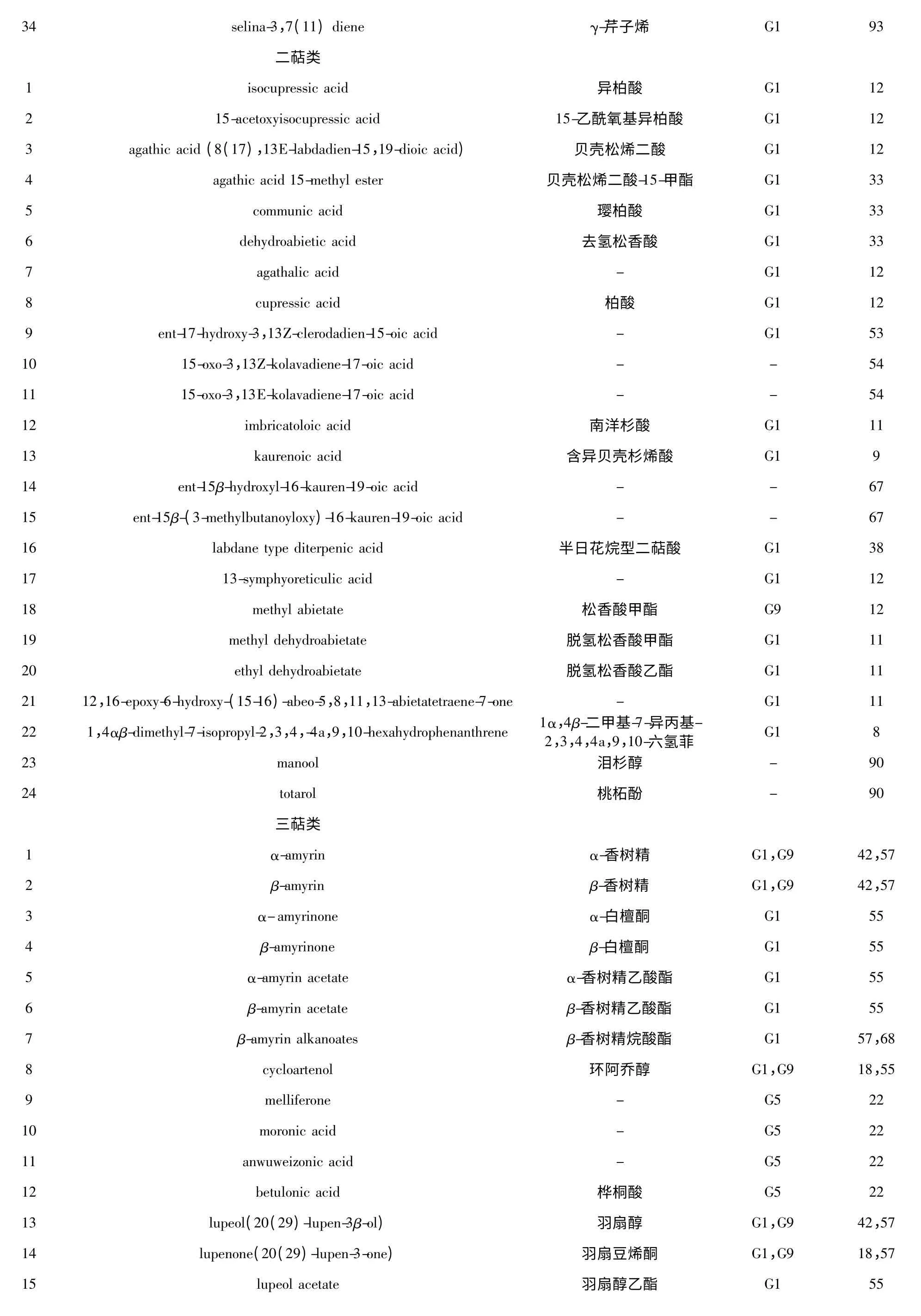

2.4 木脂素类化合物
木脂素类化合物广泛分布于包括食用植物在内的多数木本植物组织中,具有多种生理药理活性,特别是抗肿瘤及抗病毒活性,引起了人们的极大关注。目前在巴西蜂胶中共发现了6 种木脂素类化合物(表5)。

表5 巴西蜂胶中的木脂素类化合物Table 5 Ligans in Brazilian propolis
2.5 挥发油类化合物(非萜类)
巴西蜂胶中挥发油含量虽然不高,但成分相当复杂。除了上述主要的单萜及倍半烯萜外,还含有其他类有机化合物,主要包括芳香族苯甲酮、苯乙酮及其异戊烯化衍生物、苯丙烷类衍生物、酚类化合物或其酯类,以及一些小分子脂肪族醇、醛、酮及酸类化合物(表6)。其中,异戊烯基苯甲酮类化合物主要存在于红蜂胶中,对多种细菌、真菌具有强效的抑菌活性,并具有较强的肿瘤细胞毒性作用[18,28]。

表6 巴西蜂胶中的挥发油类化合物(非萜类)Table 6 Volatile oils in Brazilian propolis (non-terpenoid)

2.6 其它类化合物
随着研究的深入,人们还从巴西蜂胶中发现了少量的环氧醌、香豆酮以及其他一些未能明确分类的化学成分(表7)。
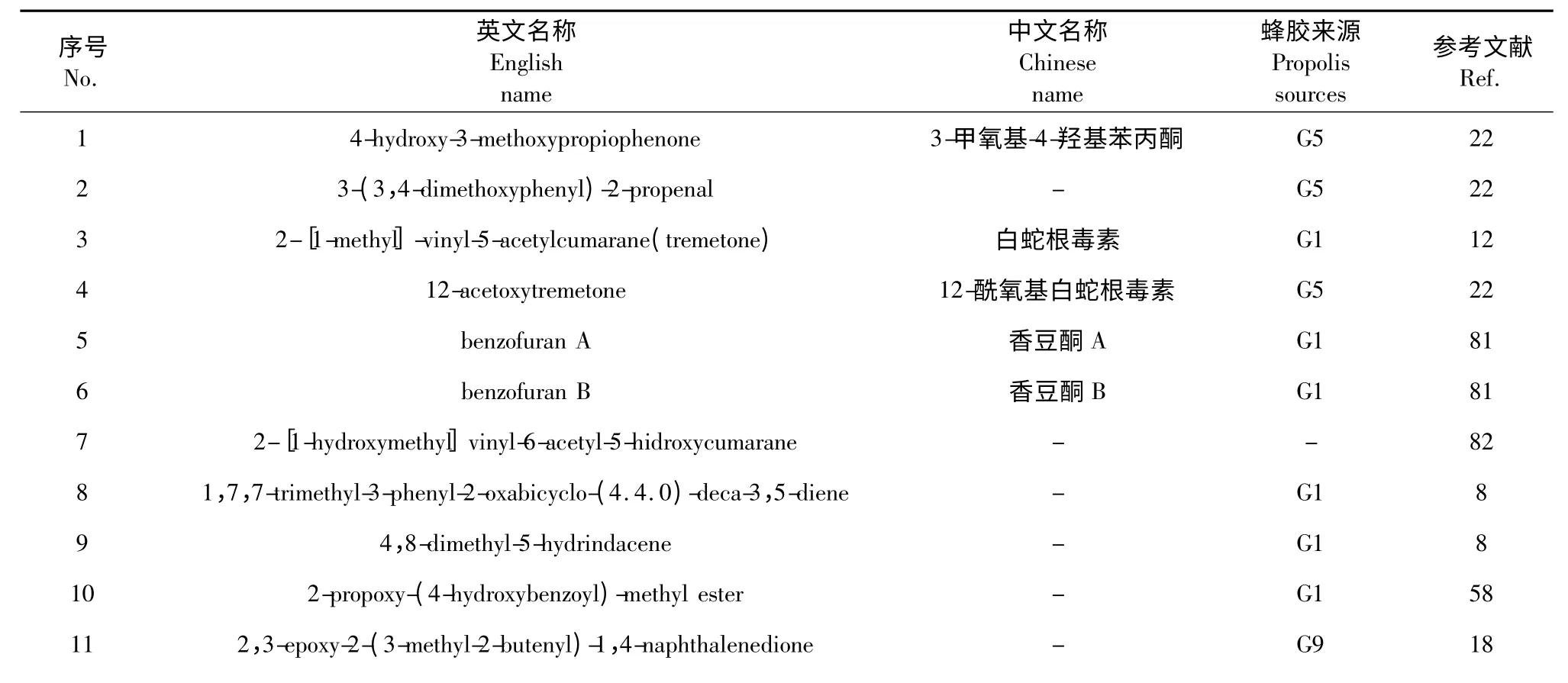
表7 巴西蜂胶中的其他类化合物Table 7 Other organic compounds in Brazilian propolis

此外,在巴西蜂胶中还存在有微量的糖类、烃类、矿物元素和维生素等物质[95-96]。Pereira 等通过HT-HRGC-MS 技术分析,从里约热内卢和圣保罗地区采集的蜂胶中鉴定出一些糖类化合物,这些物质多数为单糖类,其中肌糖是首次在蜂胶中发现的单糖类化合物[97]。最近,Mayworm 等在巴西蜂胶中还检测到了单宁酸类物质的存在,其中,红蜂胶中含量最高,绿蜂胶中次之[98]。
3 结语
巴西因其得天独厚的地理位置和丰富的植物资源而成为蜂胶生产大国之一,在世界蜂胶市场上备受瞩目。巴西蜂胶的化学成分极其复杂,目前,已从中分离鉴定到了300 多种化合物;而受蜂种、地理来源、植物来源及采胶季节等多种因素的影响,巴西蜂胶的化学成分又具有多变性,不同蜂胶之间成分差异较大。因此,根据不同的地理位置和植物来源对巴西蜂胶进行分类研究,并结合多指标指纹图谱分析技术将更利于巴西蜂胶的标准化使用和质量控制。
巴西蜂胶具有多种生理药理学活性,但目前大部分的研究仍以巴西绿蜂胶中的酚酸类化合物为主,而其他类型的蜂胶仍含有黄酮类、萜烯类等多种生物学活性物质。此外,还有部分类型的蜂胶样的研究处于空白阶段,与其相关的胶源植物的确定也有待于进一步深入研究。
1 Zhang CP (张翠平),Hu FL (胡福良).Flavonoids in propolis.Nat Prod Res Dev (天然产物研究与开发),2009,21:1084-1090.
2 Zhang CP (张翠平),et al.Phenolic acid in propolis.Chin J Mod Appl Pharm (中国现代应用药学),2013,30:102-105.
3 Zhang CP (张翠平),Hu FL (胡福良).Terpenoids in propolis.Nat Prod Res Dev (天然产物研究与开发),2012,24:976-984.
4 Bankova VS,et al.Propolis:recent advances in chemistry and plant origin.Apidologie,2000,31:3-15.
5 Park YK,et al.Botanical origin and chemical composition of Brazilian propolis.J Agric Food Chem,2002,50:2502-2506.
6 Park YK,et al.Evaluation of Brazilian propolis by both physicochemical methods and biological activity.Honeybee Sci,2000,21(2):85-90.
7 Kumazawa S,et al.Direct evidence for the plant origin of Brazilian propolis by the observation of honeybee behavior and phytochemical analysis.Chem Pharm Bull,2003,51:740-742.
8 Teixeira éW,et al.Plant origin of green propolis:bee behavior,plant anatomy and chemistry.Evid-based Compl Alt,2005,2:85-92.
9 Midorikawa K,et al.Liquid chromatography-mass spectrometry analysis of propolis.Phytochem Anal,2001,12:366-373.
10 Bankova V,et al.Phytochemical evidence for the plant origin of Brazilian propolis from São Paulo State.Z Natueforsch C,1999,54:401-405.
11 Bankova V,et al.Antibacterial diterpenic acids from Brazilian propolis.Z Naturforsch C,1996,51:277-280.
12 Banskota AH,et al.Chemical constituents of Brazilian propolis and their cytotoxic activities.J Nat Prod,1998,61:896-900.
13 Lopes FC,et al.Effect of three vegetal sources of propolis on macrophages activation.Phytomedicine,2003,10:343-343.
14 Silva CRB,et al.Pollen spectrum of propolis samples from Sāo Paulo State,Brazil.Acta Sci Anim Sci,2013,35:297-300.
15 Matos VR,et al.Pollen types and levels of total phenolic compounds in propolis produced by Apis mellifera L.(Apidae)in an area of the Semiarid Region of Bahia,Brazil.An Acad Bras Ciênc,2014,86:407-418.
16 Barth OM.Pollen analysis of Brazilian propolis.Grana,1998,37:97-101.
17 Daugsch A,et al.Brazilian red propolis-chemical composition and botanical origin.Evid-based Compl Alt,2008,5:435-441.
18 Trusheva B,et al.Bioactive constituents of Brazilian red propolis.Evide-based Compl Alt,2006,3:249-254.
19 Park YK,et al.Chemical constituents in Baccharis dracunculifolia as the main botanical origin of Southeastern Brazilian propolis.J Agric Food Chem,2004,52:1100-1103.
20 Wang K (王凯),et al.Research progress on the leading bioactive constituents of Brazilian green propolis.Nat Prod Res Dev (天然产物研究与开发),2013,25:140-145.
21 Han LW (韩利文),et al.Determination of Artepillin C in propolis by HPLC.Chin Pharm Affairs (中国药事),2008,22:312-314.
22 Ito J,et al.Anti-HIV activity of moronic acid derivatives and the new melliferone-related triterpenoid isolated from Brazilian propolis.J Nat Prod,2001,64:1278-1281.
23 Cuesta-Rubio O,et al.Polyisoprenylated benzophenones in Cuban propolis;biological activity of nemorosone.Z Naturforsch C,2002,57:372-378.
24 Trusheva B,et al.New polyisoprenylated benzophenones from Venezuelan propolis.Fitoterapia,2004,75:683-689.
25 dos Santos PA,et al.Distribution of quinic acid derivatives and other phenolic compounds in Brazilian propolis.Z Naturforsch C,2003,58:590-593.
26 Barth OM,da Luz CFP.Palynological analysis of Brazilian red propolis samples.J Apicult Res,2009,48:181.
27 Santos FA,et al.Brazilian propolis:physicochemical properties,plant origin and antibacterial activity on periodontopathogens.Phytother Res,2003,17:285-289.
28 Awale S,et al.Constituents of Brazilian red propolis and their preferential cytotoxic activity against human pancreatic FAMC-1 cancer cell line in nutrient-deprived condition.Bioorg Med Chem,2008,16:181-189.
29 Castro ML,et al.Identification of a bioactive compound isolated from Brazilian propolis type 6.Bioorg Med Chem,2009,17:5332-5335.
30 Aga H,et al.Isolation and identification of antimicrobial compounds in Brazilian propolis.Biosci Biotech Biochem,1994,58:945-946.
31 Li F,et al.Cytotoxic constituents from Brazilian red propolis and their structure-activity relationship.Bioorg Med Chem,2008,16:5434-5440.
32 Banskota AH,et al.Hepatoprotective and anti-Helicobacter pylori activities of constituents from Brazilian propolis.Phytomedicine,2001,8:16-23.
33 Tazawa S,et al.Studies on the constituents of Brazilian propolis.II.Chem Pharm Bull,1999,47:1388-1392.
34 Tazawa S,et al.Studies on the constituents of Brazilian propolis,Chem Pharm Bull,1998,46:1477-1479.
35 Hernandez J,et al.Sonoran propolis:chemical composition and antiproliferative activity on cancer cell lines.Planta Medica,2007,73:1469.
36 Bankova V,et al.A new lignan from Brazilian propolis.Z Naturforsch C,1996,51:735-737.
37 Horie T,et al.Studies of the selective O-alkylation and dealkylation of flavonoids.XXII.A convenient method for synthesizing 3,5,7-trihydroxy-6-methoxyflavones.Chem Pharm Bull,1997,45:446-451.
38 Popova S.Seasonal variations of the chemical composition of Brazilian propolis.Apidologie,1998,29:361-367.
39 Boudourova-Krasteva G,et al.Phenolics from Brazilian propolis.Z Naturforsch C,1997,52:676-679.
40 Hayashi K,et al.Isolation of antioxidative compounds from Brazilian propolis:3,4-dihydroxy-5-prenylcinnamic acid,a novel potent antioxidant.Chem Pharm Bull,1999,47:1521.
41 Koo H,et al.Effect of Apis mellifera propolis from two Brazilian regions on caries development in desalivated rats.Caries Res,1999,33:393-400.
42 Righi AA,et al.Brazilian red propolis:unreported substances,antioxidant and antimicrobial activities.J Sci Food Agric,2011,91:2363-2370.
43 Gardana C,et al.Analysis of the polyphenolic fraction of propolis from different sources by liquid chromatography-tandem mass spectrometry.J Pharm Biomed,2007,45:390-399.
44 Fernandes-Silva CC,et al.Chemical profiling of six samples of Brazilian propolis.Quim Nova,2013,36:237-240.
45 Teixeira EW,et al.Seasonal variation,chemical composition and antioxidant activity of Brazilian propolis samples.Evidbased Compl Alt,2010,7:307-315.
46 Piccinelli AL,et al.HPLC PDA-MS and NMR characterization of C-glycosyl flavones in a hydroalcoholic extract of Citrus aurantifolia leaves with antiplatelet activity.J Agr Food Chem,2008,56:1574-1581.
47 Piccinelli AL,et al.Flavonoid profile and radical-scavenging activity of Mediterranean sweet lemon (Citrus limetta Risso)juice.Food Chem,2011,129:417-422.
48 Figueirinha A,et al.Cymbopogon citratus leaves:characterization of flavonoids by HPLC-PDA-ESI/MS/MS and an approach to their potential as a source of bioactive polyphenols.Food Chem,2008,110:718-728.
49 Djoukeng JD,et al.Flavonoid profiling in leaves of citrus genotypes under different environmental situations.J Agric Food Chem,2008,56:11087-11097.
50 Greenaway W,et al.The composition and plant origins of propolis:a report of work at oxford.Bee World,1990,71:107-118.
51 Kumazawa S,et al.A new prenylated flavonoid from propolis collected in Okinawa,Japan.Biosci Biotechnol Biochem,2004,68:260-262.
52 Campo Fernaández M,et al.GC-MS determination of isoflavonoids in seven red Cuban propolis samples.J Agric Food Chem,2008,56:9927-9932.
53 Matsuno T.A new clerodane diterpenoid isolated from propolis.Z Naturforsch C,1995,50:93-97.
54 Matsuno T,et al.Isolation and characterization of cytotoxic diterpenoid isomers from propolis.Z Naturforsch C,1997,52:702-704.
55 Marcucci MC,et al.Chemical composition of Brazilian propolis from São Paulo state.Z Naturforsch C,1998,53:117-119.
56 Bankova V,et al.Chemical composition and antibacterial activity of Brazilian propolis.Z Naturforsch C,1995,50:167-172.
57 Pereira AS,et al.Lupeol alkanoates in Brazilian propolis.Z Naturforsch C,2002,57:721-726.
58 Righi AA,et al.Comparative chemistry of propolis from eight Brazilian localities.Evid-based Compl Alt,2013.
59 Oliveira AP,et al.Chemical composition and antibacterial activity of Brazilian propolis essential oil.J Venomous Animals and Toxins including Tropical Diseases,2010,16:121-130.
60 Maróstica Junior MR,et al.Comparison of volatile and polyphenolic compounds in Brazilian green propolis and its botanical origin Baccharis dracunculifolia.Food Sci Technol Res,2008,28:178-181.
61 Maárquez Hernaández I,et al.Studies on the constituents of yellow Cuban propolis:GC-MS determination of triterpenoids and flavonoids.J Agric Food Chem,2010,58:4725-4730.
62 Koo H,et al.Effects of compounds found in propolis on Streptococcus mutans growth and on glucosyltransferase activity.Antimicrob Agents Ch,2002,46:1302-1309.
63 Uchiyama N,et al.Trypanocidal terpenoids from Laurus nobilis L.Chem Pharm Bull,2002,50:1514-1516.
64 Ghisalberti EL.Propolis review.Bee World,1979,60:59-84.
65 Krol W,et al.Inhibition of neutrophils chemiluminescence by ethanol extract of propolis (EEP)and phenolic components.J Ethnopharmacol,1996,45:19-25.
66 Negri G,et al.Green propolis:unreported constituents and a novel compound from chloroform extracts.J Apicult Res,2003,42:39-41.
67 Velikova M,et al.Antibacterial ent-kaurene from Brazilian propolis of native stingless bees.Fitoterapia,2000,71:693-696.
68 Pereira AS,et al.Rapid screening of polar compounds in Brazilian propolis by high-temperature high-resolution gas chromatography-mass spectrometry.J Agric Food Chem,2000,48:5226-5230.
69 Furukawa S,et al.Two novel long-chain alkanoic acid esters of lupeol from Alecrim-propolis.Chem.Pharm Bull,2002,50:439-440.
70 Valcic S,et al.Lignans from Chilean propolis.J Nat Prod,1998,61:771-775.
71 Schmitt A,Telikepalli H,Mitscher LA.Plicatin B,the antimicrobial principle of psoralea juncea.Phytochemistry,1991,301:3569-3570.
72 Basnet P,et al.Potent free radical scavenging activity of propol isolated from Brazilian propolis.Z Naturforsch C,1997,52:828-833.
73 Tatefuji T,et al.Isolation and identification of compounds from Brazilian propolis which enhance macrophage spreading and mobility.Biol Pharm Bull,1996,19:966-970.
74 Basnet P,et al.Potent antihepatotoxic activity of dicaffeoyl quinic acids from propolis.Biol Pharm Bull,1996,19:1479-1484.
75 Marcucci MC,et al.Evaluation of phenolic compounds in Brazilian propolis from different geographic regions.Z Naturforsch C,2000,55(1/2):76-81.
76 Marcucci MC,et al.Phenolic compounds from Brazilian propolis with pharmacological activities.J Ethnopharmacol,2001,74:105-112.
77 Takemura T,et al.3,4-dicaffeoylquinic acid,a major constituent of Brazilian propolis,increases TRAIL expression and extends the lifetimes of mice infected with the influenza A virus.Evid-based Compl Alt,2012,2012:1-7.
78 Moura SAL,et al.Aqueous extract of Brazilian green propolis:primary components,evaluation of inflammation and wound healing by using subcutaneous implanted sponges.Evid-based Compl Alt,2011,2011:1-8.
79 Nunes CA,Guerreiro MC.Characterization of Brazilian green propolis throughout the seasons by headspace GC/MS and ESI-MS.J Sci Food Agri,2012,92:433-438.
80 De Sousa JPB,et al.A reliable quantitative method for the analysis of phenolic compounds in Brazilian propolis by reverse phase high performance liquid chromatography.J Sep Sci,2007,30:2656-2665.
81 Banskota AH,et al.Two novel cytotoxic benzofuran derivatives from Brazilian propolis.J Nat Prod,2000,63:1277-1279.
82 Salomao K,et al.Brazilian propolis:correlation between chemical composition and anti-microbial activity.Evid-based Compl Alt,2008,5:317-324
83 Li F,et al.Study on the constituents of Mexican propolis and their cytotoxic activity against PANC-1 human pancreatic cancer cells.J Nat Prod,2010,73:623-627.
84 Bankova V,et al.New developments in propolis chemical diversity studies (since 2000).Scientific Evidence of the Use of Propolis in Ethnomedicine,2008:1-13.
85 Valcic S,et al.Phytochemical,morphological and biological investigations of propolis from Central Chile.Z Naturforsch C,1999,54:406-416.
86 Piccinelli AL,et al.Cuban and Brazilian red propolis:botanical origin and comparative analysis by high-performance liquid chromatography-photodiode array detection/electrospray ionization tandem mass spectrometry.J Agric Food Chem,2011,59:6484-6491.
87 Da Silva Frozza CO,et al.Chemical characterization,antioxidant and cytotoxic activities of Brazilian red propolis.Food Chem Toxicol,2013,52:137-142.
88 Sulaiman GM,et al.Chemical characterization of Iraqi propolis samples and assessing their antioxidant potentials.Food Chem Toxicol,2011,49:2415-2421.
89 Li YJ,et al.Therapeutic effects of propolis essential oil on anxiety of restraint-stressed mice.Human Exp Toxicol,2012,31:157-165.
90 Patricio E,et al.The propolis of stingless bees:terpenes from the tibia of three Frieseomelitta species.J Insect Physiol,2002,48:249-254.
91 Torres RNS,et al.The volatile constituents of propolis fromPiaui.Quim Nova,2008,31:479-485.
92 Bankova V,et al.Seasonal variations in essential oil from Brazilian propolis.J Essential Oil Res,1998,10:693-696.
93 De Albuquerque IL,et al.Constituents of the essential oil of Brazilian green propolis from Brazil.J Essent Oil Res,2008,20:414-415.
94 De Castro Ishida VF,et al.A new type of Brazilian propolis:Prenylated benzophenones in propolis from Amazon and effects against cariogenic bacteria.Food Chem,2011,125:966-972.
95 Sheng J,et al.Antioxidant activity of ethanol and petroleum ether extracts from Brazilian propolis.Eur Food Res Technol,2007,225:249-253.
96 Marcucci MC,et al.Identification of amino acids in Brazilian propolis.Z Naturforsch C,1996,51(1-2):11-14.
97 Pereira AS,et al.Rapid screening of polar compounds in Brazilian propolis by high-temperature high-resolution gas chromatography-mass spectrometry.J Agric Food Chem,2000,48:5226-5230.
98 Mayworm MAS,et al.Does propolis contain tannins?Evidbased Compl Alt,2014,1-4.

